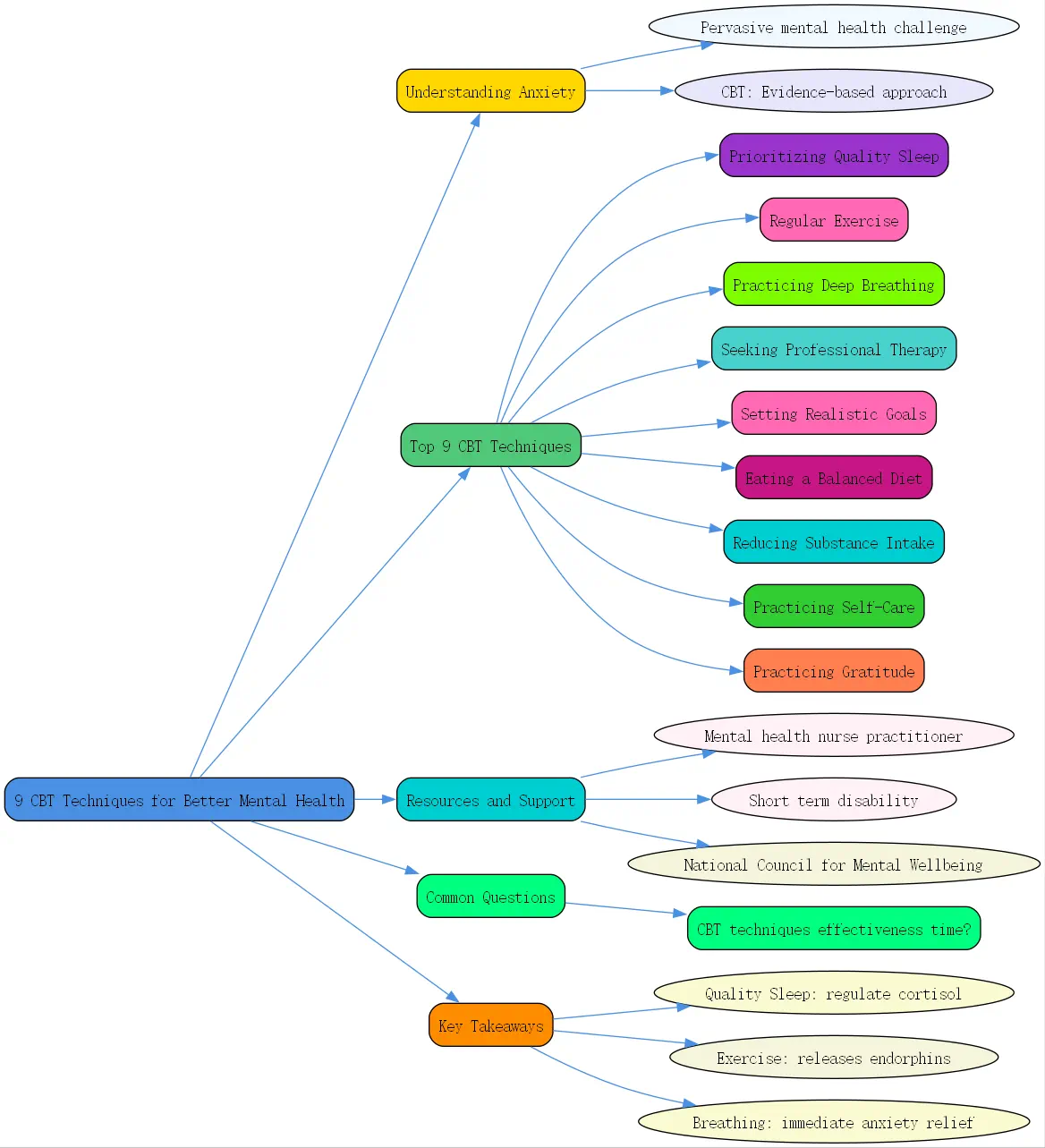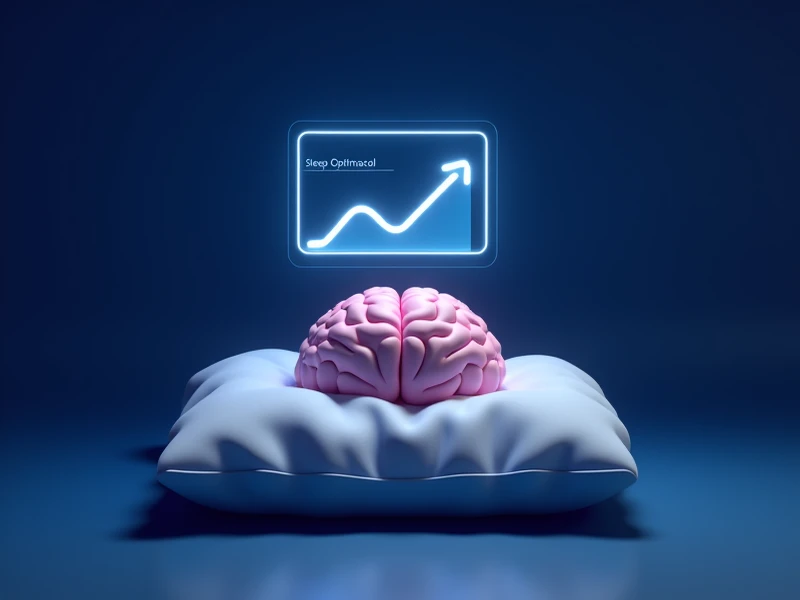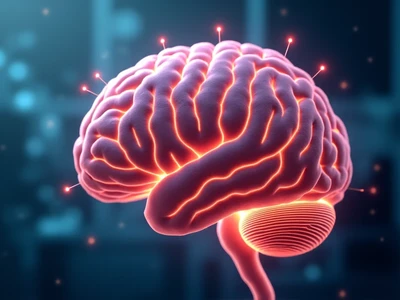Understanding Anxiety and Its Impact

Anxiety is a pervasive mental health challenge affecting millions worldwide, including myself at times. This common condition can easily interfere with your daily life, negatively affecting work performance, personal relationships, and preventing you from achieving your goals. The constant worry, racing thoughts, and physical symptoms can feel overwhelming, but there’s good news: effective tools exist to manage these feelings.
Cognitive Behavioral Therapy (CBT) offers some of the most evidence-based approaches to anxiety management. As a therapeutic approach, CBT focuses on identifying negative thought patterns and developing healthier responses. The techniques we’ll explore today have not only been scientifically validated but have helped countless individuals reclaim control over their mental health.
At BrainTalking, we believe in sharing practical, accessible strategies that can make a real difference in your daily life. Let’s explore nine powerful CBT techniques that can help you better manage anxiety and improve your overall mental wellbeing.
Top 9 CBT Techniques for Managing Anxiety

Technique 1: Prioritizing Quality Sleep
One of the simplest yet most overlooked anxiety management techniques is ensuring you get quality sleep each night. When you don’t get enough restful sleep, your body releases more cortisol, the primary stress hormone. Elevated cortisol levels directly contribute to increased anxiety—it’s a biological response that makes anxiety management significantly more difficult.
Quality sleep also dramatically improves your mood. Sleep deprivation commonly leads to irritability and fatigue, making it considerably harder to cope with anxious thoughts and feelings. When well-rested, you’re better equipped to handle stress and respond to triggers with greater emotional regulation.
Additionally, good sleep enhances concentration, cognitive function, and focus—all critical resources when managing anxiety. A well-rested mind is more capable of implementing other CBT techniques effectively, creating a foundation for better mental health.
Technique 2: Regular Exercise
Regular physical activity is a powerful CBT technique for anxiety management. When you exercise, your body releases endorphins—natural mood-elevating chemicals that help reduce anxiety and create an overall sense of wellbeing. These “”feel-good”” chemicals can transform your emotional state, often providing immediate relief from anxious feelings.
Similar to quality sleep, regular exercise reduces the production of stress hormones like cortisol. The physical exertion also promotes relaxation and deeper breathing, giving you a natural sense of calm that counteracts anxiety’s physical manifestations.

Exercise has the added benefit of boosting self-esteem and confidence. As you develop greater physical capabilities and witness positive changes in your body, these improvements can help diminish feelings of anxiety by fostering a more positive self-image. Physical activity also serves as a healthy distraction, redirecting your focus away from anxious thoughts toward something productive and beneficial.
Technique 3: Practicing Deep Breathing
Deep breathing represents one of the most portable and effective CBT techniques for immediate anxiety management. This practice helps relax your body by lowering heart rate, reducing blood pressure, and decreasing muscle tension—all physiological factors that contribute to anxiety symptoms.
Like our previous techniques, deep breathing also helps reduce cortisol production, breaking the biological cycle that perpetuates anxiety. The improved oxygen flow that comes with proper breathing techniques reduces fatigue, which often accompanies and worsens anxiety symptoms.
One of the most powerful aspects of deep breathing is how it redirects your attention. By focusing on your breath—the sensation of air entering and leaving your body—you naturally shift awareness away from anxious thoughts. This mindful focus creates mental space between you and your anxiety, allowing for greater perspective and emotional regulation.
Technique 4: Seeking Professional Therapy
Working with a psychiatric mental health nurse practitioner or therapist represents a critical CBT technique for anxiety management. Professional guidance provides personalized strategies tailored to your specific symptoms and challenges. Online therapy platforms have made this support more accessible than ever, connecting you with licensed professionals who specialize in anxiety disorders.
Professional therapy offers several advantages: clinicians can help identify underlying causes of your anxiety, teach specialized CBT techniques, and provide accountability for your mental health journey. Therapists also offer objective perspectives that friends and family, despite their best intentions, simply cannot provide.
For those dealing with severe anxiety that interferes with daily functioning, speaking with a healthcare provider about short term disability for mental health might be appropriate. Taking dedicated time to focus on recovery can be transformative when anxiety becomes debilitating. Remember that seeking help is a sign of strength, not weakness, and the right professional support can dramatically accelerate your progress.
Technique 5: Setting Realistic Goals
Setting realistic goals is a fundamental CBT technique that directly addresses one of anxiety’s common triggers: overwhelming pressure. When you establish achievable objectives rather than impossibly high standards, you reduce the mental burden that fuels anxiety. This approach helps you feel more in control of your life and emotions, counteracting the helplessness that often accompanies anxiety.
Accomplishing realistic goals creates a positive feedback loop—each achievement builds confidence and fosters a more optimistic outlook. Conversely, setting unrealistic expectations typically leads to feelings of disappointment and inadequacy, which intensify anxiety symptoms.
This technique helps develop problem-solving skills and decision-making abilities that extend beyond goal achievement into general anxiety management. By breaking larger objectives into manageable steps, you create a framework for addressing challenges without becoming overwhelmed—a valuable skill for navigating anxiety-provoking situations.
Technique 6: Eating a Balanced Diet
Your diet plays a surprisingly significant role in anxiety management. A balanced nutritional approach helps regulate blood sugar levels, preventing the irritability and tension that come with blood sugar fluctuations. These sudden changes can trigger or worsen anxiety symptoms, creating a physiological basis for emotional distress.

Emerging research highlights the connection between gut health and brain function—often called the gut-brain axis. Consuming fiber-rich foods and probiotics supports your gut microbiome, potentially improving mental health outcomes. Additionally, anti-inflammatory foods like fruits, leafy greens, and whole grains may help reduce inflammation associated with anxiety disorders.
For immediate anxiety management, consider reducing caffeine intake. Though that morning coffee might seem necessary, caffeine can mimic and amplify anxiety symptoms like increased heart rate, restlessness, and racing thoughts. Making strategic dietary adjustments represents a practical way to support your mental health alongside other CBT techniques.
Technique 7: Reducing Caffeine, Alcohol, and Drug Intake
While seemingly providing temporary relief, substances like alcohol and recreational drugs often trigger anxiety and panic attacks. These substances alter brain chemistry in ways that can exacerbate anxiety symptoms, particularly during withdrawal periods. Many who struggle with anxiety self-medicate with these substances, inadvertently creating a dangerous cycle that worsens their condition long-term.
Excessive alcohol and drug use significantly impacts sleep quality, creating the cortisol-anxiety cycle discussed earlier. Substance dependency also commonly strains relationships and leads to isolation, removing valuable support systems that could otherwise help manage anxiety.
Reducing or eliminating these substances improves self-awareness—a critical component of effective anxiety management. With greater clarity, you can better identify anxiety triggers, recognize thought patterns, and implement positive coping mechanisms rather than temporary escapes that ultimately make anxiety worse.
Technique 8: Practicing Self-Care
Self care techniques for mental health include activities like yoga, meditation, taking warm baths, or listening to calming music. These practices aren’t mere indulgences but powerful CBT techniques that directly combat anxiety. Regular self-care reduces tension and promotes an overall sense of calm that counteracts anxiety’s persistent agitation.
Self-care practices boost confidence and self-esteem while fostering a sense of control—psychological factors that directly impact anxiety levels. People who feel empowered rather than helpless typically experience less severe anxiety symptoms and recover more quickly from anxiety episodes.
The National Council for Mental Wellbeing emphasizes the importance of integrating self-care into daily routines rather than treating it as an occasional luxury. By prioritizing these activities regularly, you build resilience against stress and create healthy habits that support long-term mental wellbeing through building personal resilience managing anxiety and mental health.
Technique 9: Practicing Gratitude
Gratitude practice represents one of the most transformative CBT techniques for anxiety management. When experiencing anxiety, your focus naturally gravitates toward negative thoughts and worries. Practicing gratitude intentionally redirects your attention to positive aspects of your life, creating cognitive shifts that reduce anxiety’s grip.
Regular gratitude practice promotes self-reflection—allowing more accurate assessment of thoughts and feelings while fostering resilience. By acknowledging positive elements even during difficult times, you develop emotional strength that helps navigate challenging situations with less anxiety.
Expressing gratitude for relationships enhances social connections, which provide essential support during anxious periods. This practice creates positive feedback loops in relationships and helps build a support network that becomes invaluable for long-term anxiety management. Implementing a daily gratitude practice requires minimal time investment but offers significant returns for your mental health.
Additional Resources and Support
A psychiatric mental health nurse practitioner represents an excellent resource for anxiety management. These advanced practice nurses specialize in mental health care, offering both medication management and therapeutic approaches. They can provide comprehensive care plans that integrate multiple CBT techniques tailored to your specific needs.
For those experiencing severe anxiety that interferes with work, understanding short term disability for mental health is important. Many employers offer disability benefits that provide time and financial support for mental health recovery. This option allows you to focus entirely on implementing effective CBT techniques without work-related stressors.
The National Council for Mental Wellbeing serves as another valuable resource, offering educational materials, support programs, and provider directories. Their evidence-based approach to mental health aligns perfectly with CBT techniques, making them an excellent starting point for additional information and support services.
Remember that implementing these 9 CBT techniques for better mental health requires patience and consistency. Start with those that feel most accessible, gradually incorporating others as you develop confidence. At BrainTalking, we believe everyone deserves effective mental health strategies, and these CBT techniques provide powerful tools for building personal resilience managing anxiety and mental health.
Common Questions About CBT Techniques
How long does it take for CBT techniques to reduce anxiety symptoms?
While some CBT techniques like deep breathing can provide immediate relief, most require consistent practice over 4-12 weeks to show significant results. The timeline varies based on anxiety severity, consistency in applying techniques, and individual factors. Many people notice gradual improvements rather than overnight changes, with some techniques showing benefits more quickly than others. The most effective approach typically combines multiple techniques tailored to your specific anxiety patterns and triggers, potentially accelerating progress through building personal resilience managing anxiety and mental health.
Key Takeaways
- Quality sleep creates a biological foundation for anxiety management by regulating cortisol levels
- Regular exercise releases endorphins that naturally combat anxiety symptoms
- Deep breathing offers immediate anxiety relief by addressing physical symptoms
- Professional therapy provides personalized guidance and accountability
- Setting realistic goals reduces pressure that triggers anxiety
- A balanced diet supports mental health through blood sugar regulation and gut health
- Reducing substances like caffeine and alcohol prevents anxiety triggers
- Self-care practices build resilience against stress and anxiety
- Gratitude redirects focus from negative thoughts to positive aspects of life
- Multiple resources exist for support, including psychiatric mental health nurse practitioners and national organizations




